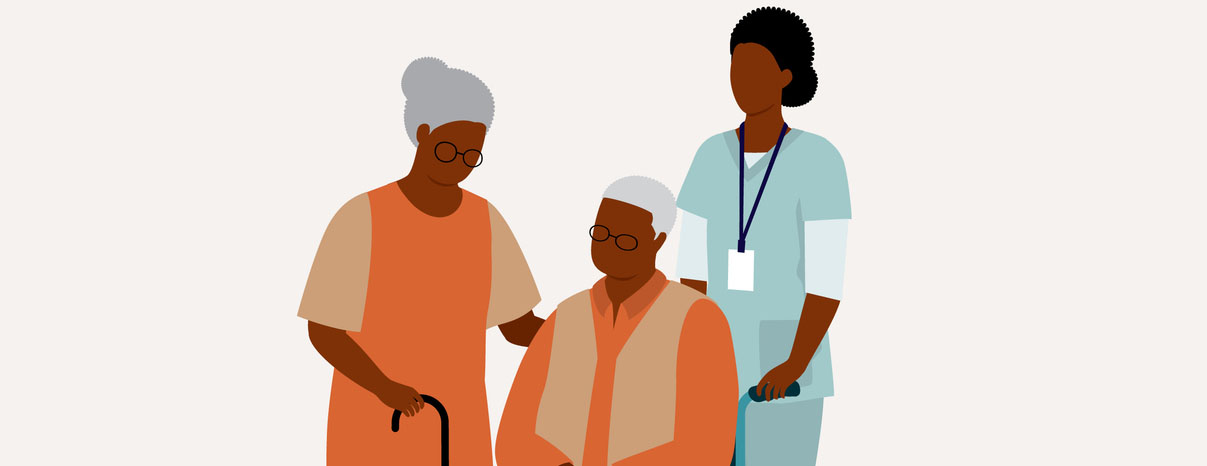Written by: Rachel Brauner
November marks National Family Caregivers Month, a time to honor, celebrate, and recognize the dedicated individuals who selflessly provide care to loved ones in need. A caregiver is someone who helps bridge the gap between the needs of the individual and their abilities, including, but not limited to illness, disability, or age-related challenges (Easterseals, n.d.). This role often includes managing daily activities, providing emotional support, and helping with healthcare needs. Family caregivers, specifically, are individuals who step into this role to care for a family member, whether it’s a parent, child, spouse, or extended relative. These caregivers offer more than just practical help; they may serve as advocates, companions, and essential support systems for those they love.
Caregiving is more common than many realize, with statistics underscoring its prevalence and significance. Nearly one in five Americans serves as a caregiver, and 61% of these caregivers are women (NAC, 2020). Estimates show that 53 million people provide unpaid care for loved ones, often while balancing full-time jobs (NAC, 2020). On average, family caregivers dedicate around 24 hours per week to caregiving tasks, with some committing 40 hours or more (Wullert & Fuentes-Afflick, 2024). The economic value of this unpaid caregiving is estimated at $470 billion annually, highlighting the crucial role caregivers play within the healthcare system (Wullert & Fuentes-Afflick, 2024).
These figures emphasize the widespread commitment to caregiving in communities, illustrating how family caregivers serve as the backbone of many support networks.
Types of Caregivers
Caregivers can come from various backgrounds and bring unique perspectives to their role. Some common types of caregivers may include:
- Family Caregivers: These caregivers provide care for a relative or loved one. They might balance caregiving duties with work and other family responsibilities, often taking on significant physical, financial, and emotional burdens.
- Professional Caregivers: Employed by healthcare facilities, professional caregivers, such as nurses or certified nursing assistants, provide services to patients within homes, hospitals, or long-term care facilities.
- Informal Caregivers: These are typically unpaid, non-professional caregivers who step up to care for a friend or neighbor. They may not have formal training but possess deep empathy and willingness to help.
- Long-Distance Caregivers: For family members who live far away from their loved one, providing care may involve coordinating services, managing finances, and arranging transportation, often with the challenge of staying informed from a distance.
No matter the type of caregiver, the caregiving situation, or where the caregiver is on their caregiving journey, National Family Caregivers Month shines a spotlight on the critical role that caregivers play in our lives and communities. It’s an opportunity to express gratitude and recognize the dedication and sacrifices caregivers make daily. Whether through lending a hand, offering words of encouragement, or connecting them to resources, let us all find ways to support and celebrate caregivers—not only this November but year-round.
References
Easterseals. (n.d.). What It Means to Be a Caregiver. Retrieved November 3, 2024 from, https://www.easterseals.com/support-and-education/for-caregivers/being-a-caregiver-for-someone-you-love.html
National Alliance for Caregiving. (2020). Caregiving in the U.S. in 2020. Retrieved November 3, 2024 from, https://www.caregiving.org/wp-content/uploads/2021/01/full-report-caregiving-in-the-united-states-01-21.pdf
Wullert K, & Fuentes-Afflick E (Eds.). (2024). Supporting Family Caregivers in STEMM: A Call to Overview of Unpaid Family Caregiving. National Academies Press. https://www.ncbi.nlm.nih.gov/books/NBK604136/
*Image Source: 1456294300; simplehappyart












